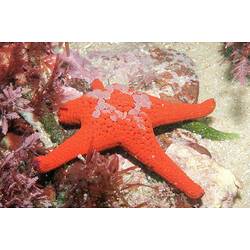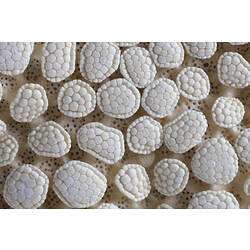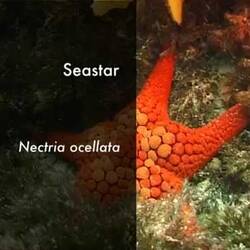General Description
Arms 5, wide at disc tapering to thin tips. Surface covered with separated "tables" each with small wedge-shaped granules around the edge. Disc and arms red to orange, sometimes mottled by some lighter and darker tables. Centre to arm tip up to 13 cm.
Biology
This seastar mainly eats sponges and ascidians that are covering rocks. It is one of the most common seastars in Victoria and Tasmania, often seen on exposed reefs, but is less common elsewhere in its range.
Distribution
Southern Australian coasts.
Habitat
On rocky substrates, to depth of 230 m.
More Information
-
Animal Type
-
Animal SubType
-
Brief Id
Red-orange, white pattern, 5 arms.
-
Colours
Red, Orange, Pink
-
Habitats
-
Diet
Carnivore
-
Diet Categories
Sponge, Encrusting Invertebrates, Invertebrates
-
Endemicity
-
Commercial
No
-
Conservation Statuses
CITES: Not listed, FFG Threatened List: Not listed, DSE Advisory List: Not listed, IUCN Red List: Not listed
-
Depths
Deep ( > 30 m)
-
Water Column Locations
On or near seafloor
-
Taxon Name
-
Scientific Author
Perrier, 1876
-
Common Name
Ocellate Seastar
-
Other Names
Seastar , Seastar
-
Phylum
-
Subphylum
-
Class
-
Superorder
-
Order
-
Family
-
Genus
-
Species Name
ocellata










